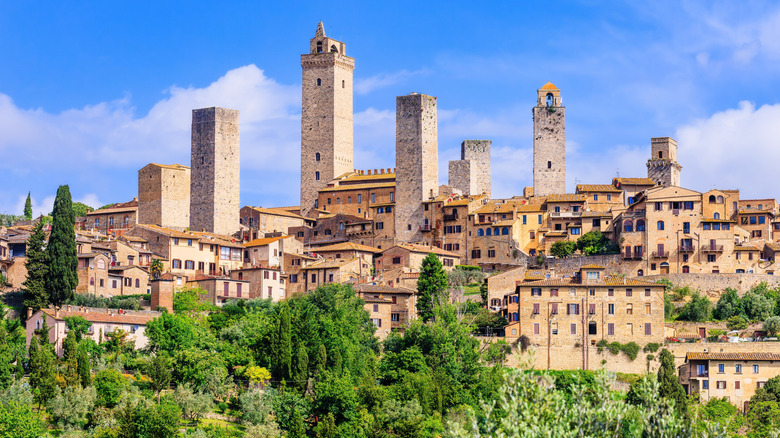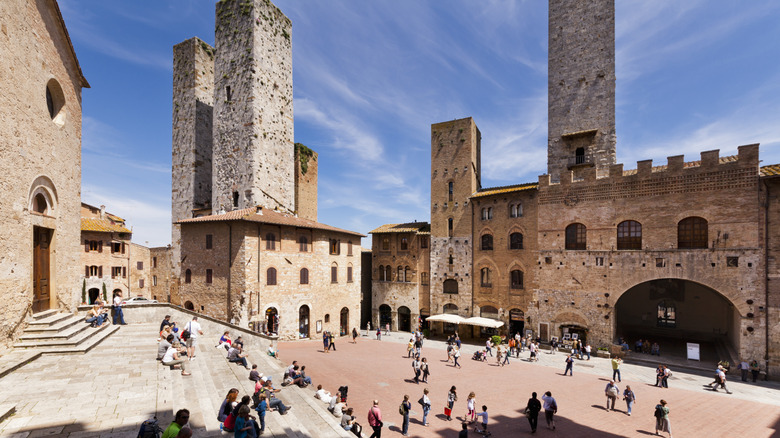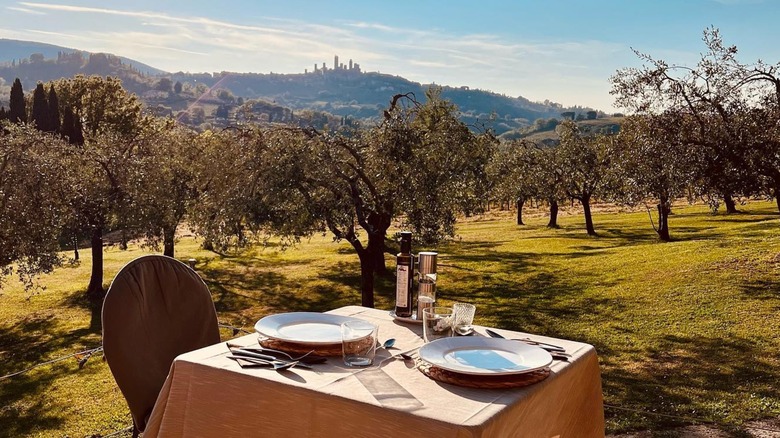TV host and best-selling travel guidebook author Rick Steves openly expresses his deep appreciation for Italy. It’s actually his all-time favorite country in Europe. While his favorite Tuscan escape is Volterra, the most underrated hill town in Italy, Steves is also fond of the popular San Gimignano. On his website, he describes the enchanting San Gimignano as the “epitome of a Tuscan hill town” that deserves a spot on your Italian itinerary. Although the destination will probably be filled with other tourists, Steves acknowledges the unmatched beauty of its historic buildings and delicious cuisine.
San Gimignano, often referred to as the “Manhattan of the Middle Ages,” is steeped in history and is one of Tuscany’s most visually dramatic hill towns. Located just 36 miles from Florence, the center of town is a UNESCO World Heritage site that transports visitors back in time. Steves lovingly refers to the town as “the region’s glamour girl: Visually striking and perfectly preserved,” with the town’s most recognized landmark being the twin towers that have stood for over 700 years.
According to Steves, while San Gimignano is undeniably beautiful, it can feel crowded during peak hours, with vendors catering heavily to tourists. “I find the charm of San Gimignano is easiest to enjoy after hours, when most tourists have gone back to their buses, vendors have made their money, and the town recaptures its magic,” Steves says. His recommendation? Arrive in the late afternoon and stay overnight to experience the town’s quieter, more authentic side.
Discover the medieval marvels in San Gimignano
Start your exploration in the former medieval crossroads of Tuscany at Piazza della Cisterna, San Gimignano’s main square, where centuries-old buildings frame a bustling marketplace. This triangular-shaped square is named after the ancient cistern at its center and is surrounded by grand medieval buildings, wine bars, restaurants, and gelato shops. Steves writes, “I like imagining this square in pilgrimage times, lined by inns and taverns for the town’s guests, with maids and children fetching water from the well.”
One of the best ways to immerse yourself in the city’s history is by visiting the Civic Museum, which features an impressive collection of frescoes. In the same building, climb the Torre Grossa, the tallest tower in the city at 177 feet high. This tower is open to the public and offers panoramic views of the rolling Tuscan countryside. To see both attractions, it will run you approximately $10.
While the town once had 72 towers, most were torn down, and San Gimignano never fully recovered. Only 14 remain, leaving it in what Steves calls “a 14th-century time-warp” on his website. Another landmark on Steves’ must-visit recommendations is the Cathedral of San Gimignano. This stunning Romanesque church is adorned with vibrant frescoes depicting scenes from the Old and New Testaments. You can buy a single entry for approximately $5 or opt for the San Gimignano Pass for about $14, which gives you access to both the Civic Museum and the church with one ticket.




